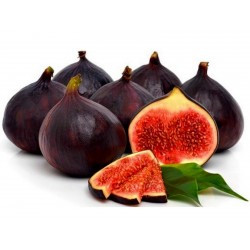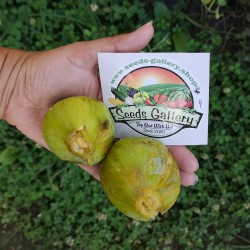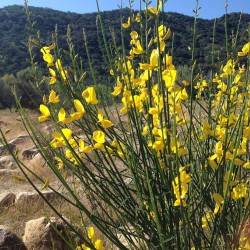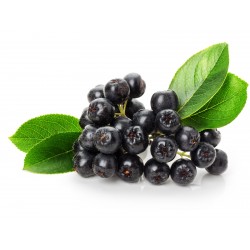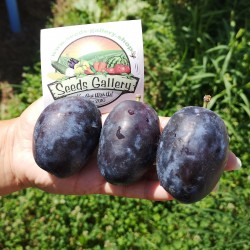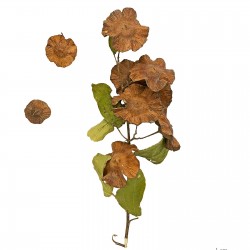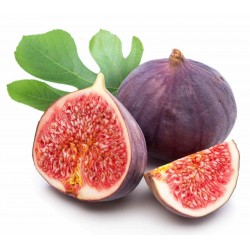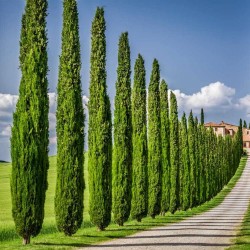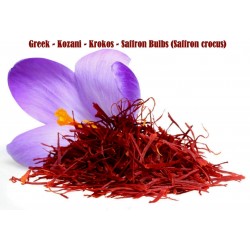Seeds Gallery Com,
5/
5
<!DOCTYPE html>
<html>
<head>
<meta http-equiv="Content-Type" content="text/html; charset=UTF-8" />
</head>
<body>
<h2><span style="font-size: 14pt; font-family: helvetica, arial, sans-serif;"><strong>Saffron Bulbs (Saffron crocus)</strong></span></h2>
<h2><span style="color: #f60303; font-size: 14pt; font-family: helvetica, arial, sans-serif;"><strong>Price for Package of 1 bulb.</strong></span></h2>
<p><span style="color: #000000; font-family: helvetica, arial, sans-serif;">Crocus sativus, commonly known as saffron crocus, or autumn crocus,[2] is a species of flowering plant of the Crocus genus in the Iridaceae family. It is best known for producing the spice saffron from the filaments that grow inside the flower. The term "autumn crocus" is also mistakenly used for flowers in the Colchicum species. However, crocuses have 3 stamens and 1 style, while colchicum have 6 stamens and 3 styles and are toxic.</span></p>
<p><span style="color: #000000; font-family: helvetica, arial, sans-serif;">This cormous autumn-flowering perennial plant species is unknown in the wild.[2] Human cultivation of saffron crocus and use of saffron have taken place for more than 3,500 years and spans different cultures, continents, and civilizations, see history of saffron. Crocus sativus is currently known to grow in the Mediterranean, East Asia, and Irano-Turanian Region.[4] Saffron may be the triploid form of a species found in Eastern Greece, Crocus cartwrightianus; it probably appeared first in Crete. An origin in Western or Central Asia, although often suspected, is not supported by botanical research.[5] Other sources suggest some genetic input from Crocus pallasii.</span></p>
<p><span style="color: #000000; font-family: helvetica, arial, sans-serif;"><strong>Morphology</strong></span></p>
<p><span style="color: #000000; font-family: helvetica, arial, sans-serif;">Crocus sativus has a corm, which holds leaves, bracts, bracteole, and the flowering stalk.[4] These are protected by the corm underground. C. sativus generally blooms with purple flowers in the autumn. The plant grows about 10 to 30 cm high.[7] C. sativus is a triploid with 24 chromosomes, which means it has three times the haploid number of chromosomes. This makes the plant sterile due to its inability to pair chromosomes during meiosis.</span></p>
<p><span style="color: #000000; font-family: helvetica, arial, sans-serif;"><strong>Cultivation</strong></span></p>
<p><span style="color: #000000; font-family: helvetica, arial, sans-serif;">Crocus sativus is unknown in the wild, and its ancestor is unknown. The species Crocus cartwrightianus is the most probable ancestor,[9][6] but C. thomassi and C. pallasii are still being considered as potential predecessors.[10] Manual vegetative multiplication is necessary to produce offspring for this species as the plant itself is a triploid that is self-incompatible and male sterile, therefore rendering it incapable of sexual reproduction. This inability to reproduce on its own supports the hypothesis that C. sativus is a mutant descending from C. carthwrightianus as a result of selective breeding.</span></p>
<p><span style="color: #000000; font-family: helvetica, arial, sans-serif;">Corms of Crocus sativus should be planted 4 inches apart and in a trough 4 inches deep. The flower grows best in areas of full sun in well-drained soil with moderate levels of organic content.[11] The corms will multiply after each year, and will last 3–5 years.</span></p>
<p><span style="color: #000000; font-family: helvetica, arial, sans-serif;"><strong>Use</strong></span></p>
<p><span style="color: #000000; font-family: helvetica, arial, sans-serif;">Saffron is considered to be the most valuable spice by weight. <strong>See spice</strong>. Depending on the size of harvested stigmas, 50,000–75,000 Crocus sativus plants are needed to produce about 1 pound of saffron;[13] each flower only produces three stigmas. Stigmas should be harvested mid-morning when the flowers are fully opened.[12] The saffron crocus (Crocus sativus) should not be confused with "meadow" saffron or autumn crocus (Colchicum autumnale) which is poisonous.</span></p>
<p><span style="color: #000000; font-family: helvetica, arial, sans-serif;"><strong>Spice</strong></span></p>
<p><span style="color: #000000; font-family: helvetica, arial, sans-serif;">Saffron (pronounced /ˈsæfrən/ or /ˈsæfrɒn/)[1] is a spice derived from the flower of Crocus sativus, commonly known as the "saffron crocus". The vivid crimson stigmas and styles, called threads, are collected and dried to be used mainly as a seasoning and colouring agent in food. Saffron, long among the world's most costly spices by weight,[2][3][4] was probably first cultivated in or near Greece.[5] C. sativus is probably a form of C. cartwrightianus, that emerged by human cultivators selectively breeding plants for unusually long stigmas in late Bronze Age Crete.[6] It slowly propagated throughout much of Eurasia and was later brought to parts of North Africa, North America, and Oceania.</span></p>
<p><span style="color: #000000; font-family: helvetica, arial, sans-serif;">Saffron's taste and iodoform or hay-like fragrance result from the chemicals picrocrocin and safranal.[7][8] It also contains a carotenoid pigment, crocin, which imparts a rich golden-yellow hue to dishes and textiles. Its recorded history is attested in a 7th-century BC Assyrian botanical treatise compiled under Ashurbanipal,[9] and it has been traded and used for over four millennia. Iran now accounts for approximately 90% of the world production of saffron.</span></p>
<p><span style="color: #000000; font-family: helvetica, arial, sans-serif;">The domesticated saffron crocus, Crocus sativus, is an autumn-flowering perennial plant unknown in the wild. It probably descends from the eastern Mediterranean autumn-flowering Crocus cartwrightianus,[12][13] which is also known as "wild saffron"[14] and originated in Crete[15] or mainland Greece.[8] An origin in Southwest Asia,[3][16] although often suspected, has been disapproved by botanical research.[17] The saffron crocus probably resulted when C. cartwrightianus was subjected to extensive artificial selection by growers seeking longer stigmas. C. thomasii and C. pallasii are other possible sources.[13][18] As a genetically monomorphic clone,[15] it slowly propagated throughout much of Eurasia.</span></p>
<p><span style="color: #000000; font-family: helvetica, arial, sans-serif;">It is a sterile triploid form, which means that three homologous sets of chromosomes compose each specimen's genetic complement; C. sativus bears eight chromosomal bodies per set, making for 24 in total.[19] Being sterile, the purple flowers of C. sativus fail to produce viable seeds; reproduction hinges on human assistance: clusters of corms, underground, bulb-like, starch-storing organs, must be dug up, divided, and replanted. A corm survives for one season, producing via this vegetative division up to ten "cormlets" that can grow into new plants in the next season.[12] The compact corms are small, brown globules that can measure as large as 5 cm (2 in) in diameter, have a flat base, and are shrouded in a dense mat of parallel fibres; this coat is referred to as the "corm tunic". Corms also bear vertical fibres, thin and net-like, that grow up to 5 cm (2 in) above the plant's neck.[19]</span></p>
<p><span style="color: #000000; font-family: helvetica, arial, sans-serif;">The plant sprouts 5–11 white and non-photosynthetic leaves known as cataphylls. These membrane-like structures cover and protect the crocus's 5 to 11 true leaves as they bud and develop. The latter are thin, straight, and blade-like green foliage leaves, which are 1–3 mm (0.04–0.12 in), in diameter, which either expand after the flowers have opened ("hysteranthous") or do so simultaneously with their blooming ("synanthous"). C. sativus cataphylls are suspected by some to manifest prior to blooming when the plant is irrigated relatively early in the growing season. Its floral axes, or flower-bearing structures, bear bracteoles, or specialised leaves, that sprout from the flower stems; the latter are known as pedicels.[19] After aestivating in spring, the plant sends up its true leaves, each up to 40 cm (16 in) in length. Only in October, after most other flowering plants have released their seeds, do its brilliantly hued flowers develop; they range from a light pastel shade of lilac to a darker and more striated mauve.[20] The flowers possess a sweet, honey-like fragrance. Upon flowering, the plants are 20–30 cm (8–12 in) in height and bear up to four flowers. A three-pronged style 25–30 mm (1.0–1.2 in) in length, emerges from each flower. Each prong terminates with a vivid crimson stigma, which are the distal end of a carpel.</span></p>
<p><span style="color: #000000; font-family: helvetica, arial, sans-serif;"><strong>Cultivation</strong></span></p>
<p><span style="color: #000000; font-family: helvetica, arial, sans-serif;">The saffron crocus, unknown in the wild, probably descends from Crocus cartwrightianus. It is a triploid that is "self-incompatible" and male sterile; it undergoes aberrant meiosis and is hence incapable of independent sexual reproduction—all propagation is by vegetative multiplication via manual "divide-and-set" of a starter clone or by interspecific hybridisation.</span></p>
<p><span style="color: #000000; font-family: helvetica, arial, sans-serif;">Crocus sativus thrives in the Mediterranean maquis, an ecotype superficially resembling the North American chaparral, and similar climates where hot and dry summer breezes sweep semi-arid lands. It can nonetheless survive cold winters, tolerating frosts as low as −10 °C (14 °F) and short periods of snow cover.[12][22] Irrigation is required if grown outside of moist environments such as Kashmir, where annual rainfall averages 1,000–1,500 mm (39–59 in); saffron-growing regions in Greece (500 mm or 20 in annually) and Spain (400 mm or 16 in) are far drier than the main cultivating Iranian regions. What makes this possible is the timing of the local wet seasons; generous spring rains and drier summers are optimal. Rain immediately preceding flowering boosts saffron yields; rainy or cold weather during flowering promotes disease and reduces yields. Persistently damp and hot conditions harm the crops,[23] and rabbits, rats, and birds cause damage by digging up corms. Nematodes, leaf rusts, and corm rot pose other threats. Yet Bacillus subtilis inoculation may provide some benefit to growers by speeding corm growth and increasing stigma biomass yield.</span></p>
<p><span style="color: #000000; font-family: helvetica, arial, sans-serif;">The plants fare poorly in shady conditions; they grow best in full sunlight. Fields that slope towards the sunlight are optimal (i.e., south-sloping in the Northern Hemisphere). Planting is mostly done in June in the Northern Hemisphere, where corms are lodged 7–15 cm (3–6 in) deep; its roots, stems, and leaves can develop between October and February.[19] Planting depth and corm spacing, in concert with climate, are critical factors in determining yields. Mother corms planted deeper yield higher-quality saffron, though form fewer flower buds and daughter corms. Italian growers optimise thread yield by planting 15 cm (6 in) deep and in rows 2–3 cm (0.8–1.2 in) apart; depths of 8–10 cm (3–4 in) optimise flower and corm production. Greek, Moroccan, and Spanish growers employ distinct depths and spacings that suit their locales.</span></p>
<p><span style="color: #000000; font-family: helvetica, arial, sans-serif;">C. sativus prefers friable, loose, low-density, well-watered, and well-drained clay-calcareous soils with high organic content. Traditional raised beds promote good drainage. Soil organic content was historically boosted via application of some 20–30 tonnes (20–30 long tons; 22–33 short tons) of manure per hectare. Afterwards, and with no further manure application, corms were planted.[25] After a period of dormancy through the summer, the corms send up their narrow leaves and begin to bud in early autumn. Only in mid-autumn do they flower. Harvests are by necessity a speedy affair: after blossoming at dawn, flowers quickly wilt as the day passes.[26] All plants bloom within a window of one or two weeks.[27] Stigmas are dried quickly upon extraction and (preferably) sealed in airtight containers.</span></p>
<p><span style="color: #000000; font-family: helvetica, arial, sans-serif;">One freshly picked flower yields an average 30 mg (0.0011 oz) of fresh saffron or 7 mg (0.00025 oz) dried; roughly 150 flowers yield 1 g (0.035 oz) of dry saffron threads; to produce 12 g (0.42 oz) of dried saffron, 1 kg (2.2 lb) of flowers are needed; 1 lb (0.45 kg) yields 0.2 oz (5.7 g) of dried saffron.[25] To glean 1 lb (450 g) of dry saffron requires the harvest of 50,000–75,000 flowers; a kilogram requires 110,000–170,000 flowers.[29][30] Forty hours of labour are needed to pick 150,000 flowers.</span></p>
<p><span style="color: #000000; font-family: helvetica, arial, sans-serif;"><strong>Chemistry</strong></span></p>
<p><span style="color: #000000; font-family: helvetica, arial, sans-serif;">Saffron contains more than 150 volatile and aroma-yielding compounds. It also has many nonvolatile active components,[33] many of which are carotenoids, including zeaxanthin, lycopene, and various α- and β-carotenes. However, saffron's golden yellow-orange colour is primarily the result of α-crocin. This crocin is trans-crocetin di-(β-D-gentiobiosyl) ester; it bears the systematic (IUPAC) name 8,8-diapo-8,8-carotenoic acid. This means that the crocin underlying saffron's aroma is a digentiobiose ester of the carotenoid crocetin.[33] Crocins themselves are a series of hydrophilic carotenoids that are either monoglycosyl or diglycosyl polyene esters of crocetin.[33] Crocetin is a conjugated polyene dicarboxylic acid that is hydrophobic, and thus oil-soluble. When crocetin is esterified with two water-soluble gentiobioses, which are sugars, a product results that is itself water-soluble. The resultant α-crocin is a carotenoid pigment that may comprise more than 10% of dry saffron's mass. The two esterified gentiobioses make α-crocin ideal for colouring water-based and non-fatty foods such as rice dishes.[5]</span></p>
<p><span style="color: #000000; font-family: helvetica, arial, sans-serif;">The bitter glucoside picrocrocin is responsible for saffron's flavour. Picrocrocin (chemical formula: C</span></p>
<p><span style="color: #000000; font-family: helvetica, arial, sans-serif;">16H</span></p>
<p><span style="color: #000000; font-family: helvetica, arial, sans-serif;">26O</span></p>
<p><span style="color: #000000; font-family: helvetica, arial, sans-serif;">7; systematic name: 4-(β-D-glucopyranosyloxy)-2,6,6-trimethylcyclohex-1-ene-1-carboxaldehyde) is a union of an aldehyde sub-molecule known as safranal (systematic name: 2,6,6-trimethylcyclohexa-1,3-diene-1-carboxaldehyde) and a carbohydrate. It has insecticidal and pesticidal properties, and may comprise up to 4% of dry saffron. Picrocrocin is a truncated version of the carotenoid zeaxanthin that is produced via oxidative cleavage, and is the glycoside of the terpene aldehyde safranal.</span></p>
<p><span style="color: #000000; font-family: helvetica, arial, sans-serif;">When saffron is dried after its harvest, the heat, combined with enzymatic action, splits picrocrocin to yield D–glucose and a free safranal molecule.[32] Safranal, a volatile oil, gives saffron much of its distinctive aroma.[7][35] Safranal is less bitter than picrocrocin and may comprise up to 70% of dry saffron's volatile fraction in some samples.[34] A second molecule underlying saffron's aroma is 2-hydroxy-4,4,6-trimethyl-2,5-cyclohexadien-1-one, which produces a scent described as saffron, dried hay-like.[36] Chemists find this is the most powerful contributor to saffron's fragrance, despite its presence in a lesser quantity than safranal.[36] Dry saffron is highly sensitive to fluctuating pH levels, and rapidly breaks down chemically in the presence of light and oxidising agents. It must, therefore, be stored away in air-tight containers to minimise contact with atmospheric oxygen. Saffron is somewhat more resistant to heat.</span></p>
<p><span style="color: #000000; font-family: helvetica, arial, sans-serif;"><strong>Grades and ISO 3632 categories</strong></span></p>
<p><span style="color: #000000; font-family: helvetica, arial, sans-serif;">Saffron is not all of the same quality and strength. Strength is related to several factors including the amount of style picked along with the red stigma. Age of the saffron is also a factor. More style included means the saffron is less strong gram for gram, because the colour and flavour are concentrated in the red stigmas. Saffron from Iran, Spain and Kashmir is classified into various grades according to the relative amounts of red stigma and yellow styles it contains. Grades of Iranian saffron are: "sargol" (red stigma tips only, strongest grade), "pushal" or "pushali" (red stigmas plus some yellow style, lower strength), "bunch" saffron (red stigmas plus large amount of yellow style, presented in a tiny bundle like a miniature wheatsheaf) and "konge" (yellow style only, claimed to have aroma but with very little, if any, colouring potential). Grades of Spanish saffron are "coupé" (the strongest grade, like Iranian sargol), "mancha" (like Iranian pushal), and in order of further decreasing strength "rio", "standard" and "sierra" saffron. The word "mancha" in the Spanish classification can have two meanings: a general grade of saffron or a very high quality Spanish-grown saffron from a specific geographical origin. Real Spanish-grown La Mancha saffron has PDO protected status and this is displayed on the product packaging. Spanish growers fought hard for Protected Status because they felt that imports of Iranian saffron re-packaged in Spain and sold as "Spanish Mancha saffron" were undermining the genuine La Mancha brand. Similar was the case in Kashmir where Imported Iranian saffron is mixed with local saffron and sold as ‘Kashmir brand’ at a higher price[37]. In Kashmir, saffron is mostly classified into two main categories called 'Mongra' (stigma alone) or 'Laccha' (stigmas attached with parts of the style)[38]. Countries producing less saffron do not have specialised words for different grades and may only produce one grade. Artisan producers in Europe and New Zealand have offset their higher labour charges for saffron harvesting by targeting quality, only offering extremely high grade saffron.</span></p>
<p><span style="color: #000000; font-family: helvetica, arial, sans-serif;">In addition to descriptions based on how the saffron is picked, saffron may be categorised under the international standard ISO 3632 after laboratory measurement of crocin (responsible for saffron's colour), picrocrocin (taste), and safranal (fragrance or aroma) content.[39] However, often there is no clear grading information on the product packaging and little of the saffron readily available in UK is labelled with ISO category. This lack of information makes it hard for customers to make informed choices when comparing prices and buying saffron.</span></p>
<p><span style="color: #000000; font-family: helvetica, arial, sans-serif;">Under ISO 3632, determination of non-stigma content ("floral waste content") and other extraneous matter such as inorganic material ("ash") are also key. Grading standards are set by the International Organization for Standardization, a federation of national standards bodies. ISO 3632 deals exclusively with saffron and establishes three categories: III (poorest quality), II, and I (finest quality). Formerly there was also category IV, which was below category III. Samples are assigned categories by gauging the spice's crocin and picrocrocin content, revealed by measurements of specific spectrophotometric absorbance. Safranal is treated slightly differently and rather than there being threshold levels for each category, samples must give a reading of 20–50 for all categories.</span></p>
<p><span style="color: #000000; font-family: helvetica, arial, sans-serif;">These data are measured through spectrophotometry reports at certified testing laboratories worldwide. Higher absorbances imply greater levels of crocin, picrocrocin and safranal, and thus a greater colouring potential and therefore strength per gram. The absorbance reading of crocin is known as the "colouring strength" of that saffron. Saffron's colouring strength can range from lower than 80 (for all category IV saffron) up to 200 or greater (for category I). The world's finest samples (the selected, most red-maroon, tips of stigmas picked from the finest flowers) receive colouring strengths in excess of 250, making such saffron over three times more powerful than category IV saffron. Market prices for saffron types follow directly from these ISO categories. Sargol and coupé saffron would typically fall into ISO 3632 category I. Pushal and mancha would probably be assigned to category II. On many saffron packaging labels, neither the ISO 3632 category nor the colouring strength (the measurement of crocin content) is displayed.</span></p>
<p><span style="color: #000000; font-family: helvetica, arial, sans-serif;">However, many growers, traders, and consumers reject such lab test numbers. Some people prefer a more holistic method of sampling batches of threads for taste, aroma, pliability, and other traits in a fashion similar to that practised by experienced wine tasters.[40] However, ISO 3632 grade and colouring strength information allow consumers to make instant comparisons between the quality of different saffron brands, without needing to purchase and sample the saffron. In particular, consumers can work out value for money based on price per unit of colouring strength rather than price per gram, given the wide possible range of colouring strengths that different kinds of saffron can have.</span></p>
<p><span style="color: #000000; font-family: helvetica, arial, sans-serif;"><strong>Adulteration</strong></span></p>
<p><span style="color: #000000; font-family: helvetica, arial, sans-serif;">Despite attempts at quality control and standardisation, an extensive history of saffron adulteration, particularly among the cheapest grades, continues into modern times. Adulteration was first documented in Europe's Middle Ages, when those found selling adulterated saffron were executed under the Safranschou code.[41] Typical methods include mixing in extraneous substances like beetroot, pomegranate fibres, red-dyed silk fibres, or the saffron crocus's tasteless and odourless yellow stamens. Other methods included dousing saffron fibres with viscid substances like honey or vegetable oil to increase their weight. Powdered saffron is more prone to adulteration, with turmeric, paprika, and other powders used as diluting fillers. Adulteration can also consist of selling mislabelled mixes of different saffron grades. Thus, in India, high-grade Kashmiri saffron is often sold and mixed with cheaper Iranian imports; these mixes are then marketed as pure Kashmiri saffron, a development that has cost Kashmiri growers much of their income.[42][43] Safflower is a common substitute sometimes sold as saffron. The spice is reportedly counterfeited with horse hair, corn silk, or shredded paper. Tartrazine or sunset yellow have been used to colour counterfeit powdered saffron.</span></p>
<p><span style="color: #000000; font-family: helvetica, arial, sans-serif;"><strong>Types</strong></span></p>
<p><span style="color: #000000; font-family: helvetica, arial, sans-serif;">The various saffron crocus cultivars give rise to thread types that are often regionally distributed and characteristically distinct. Varieties (not varieties in the botanical sense) from Spain, including the tradenames "Spanish Superior" and "Creme", are generally mellower in colour, flavour, and aroma; they are graded by government-imposed standards. Italian varieties are slightly more potent than Spanish. The most intense varieties tend to be Iranian. Various "boutique" crops are available from New Zealand, France, Switzerland, England, the United States, and other countries—some of them organically grown. In the US, Pennsylvania Dutch saffron—known for its "earthy" notes—is marketed in small quantities.</span></p>
<p><span style="color: #000000; font-family: helvetica, arial, sans-serif;">Consumers may regard certain cultivars as "premium" quality. The "Aquila" saffron, or zafferano dell'Aquila, is defined by high safranal and crocin content, distinctive thread shape, unusually pungent aroma, and intense colour; it is grown exclusively on eight hectares in the Navelli Valley of Italy's Abruzzo region, near L'Aquila. It was first introduced to Italy by a Dominican monk from Inquisition-era Spain[when?]. But the biggest saffron cultivation in Italy is in San Gavino Monreale, Sardinia, where it is grown on 40 hectares, representing 60% of Italian production; it too has unusually high crocin, picrocrocin, and safranal content. Another is the "Mongra" or "Lacha" saffron of Kashmir (Crocus sativus 'Cashmirianus'), which is among the most difficult for consumers to obtain. Repeated droughts, blights, and crop failures in Kashmir combine with an Indian export ban, contribute to its prohibitive overseas prices. Kashmiri saffron is recognisable by its dark maroon-purple hue; it is among the world's darkest, which hints at strong flavour, aroma, and colouring effect.</span></p>
<p><span style="color: #000000; font-family: helvetica, arial, sans-serif;"><strong>Trade</strong></span></p>
<p><span style="color: #000000; font-family: helvetica, arial, sans-serif;">Almost all saffron grows in a belt from Spain in the west to India in the east. The other continents, except Antarctica, produce smaller amounts. In 2014, 250 t (250,000 kg) were produced worldwide.[47] Iran is responsible for around 90–93% of global production, and much of their produce is exported.[10] A few of Iran's drier eastern and southeastern provinces, including Fars, Kerman, and those in the Khorasan region, glean the bulk of modern global production. In 2005, the second-ranked Greece produced 5.7 t (5,700 kg), while Morocco (the Berber region of Taliouine), and India (Kashmir), tied for third rank, each producing 2.3 t (2,300 kg).</span></p>
<p><span style="color: #000000; font-family: helvetica, arial, sans-serif;">In recent years, Afghan cultivation has risen. Azerbaijan, Morocco, and Italy are, in decreasing order, lesser producers. Prohibitively high labour costs and abundant Iranian imports mean that only select locales continue the tedious harvest in Austria, Germany, and Switzerland—among them the Swiss village of Mund, whose annual output is a few kilograms.[8] Microscale production of saffron can be found in Australia (mainly the state of Tasmania),[48] China, Egypt, parts of England[49] France, Israel, Mexico, New Zealand, Sweden (Gotland), Turkey (mainly around the town of Safranbolu), the United States (California and Pennsylvania), and Central Africa.</span></p>
<p><span style="color: #000000; font-family: helvetica, arial, sans-serif;">Saffron prices at wholesale and retail rates range from US$500 to US$5,000 per pound, or US$1,100–11,000/kg. In Western countries, the average retail price in 1974 was $1,000 per pound, or US$2,200 per kilogram.[3] In February 2013, a retail bottle containing 0.06 ounces could be purchased for $16.26 or the equivalent of $4,336 per pound or as little as about $2,000/pound in larger quantities. A pound contains between 70,000 and 200,000 threads. Vivid crimson colouring, slight moistness, elasticity, and lack of broken-off thread debris are all traits of fresh saffron.</span></p>
<p><span style="color: #000000; font-family: helvetica, arial, sans-serif;"><strong>Uses</strong></span></p>
<p><span style="color: #000000; font-family: helvetica, arial, sans-serif;">Saffron's aroma is often described by connoisseurs as reminiscent of metallic honey with grassy or hay-like notes, while its taste has also been noted as hay-like and sweet. Saffron also contributes a luminous yellow-orange colouring to foods. Saffron is widely used in Persian,[50] Indian, European, and Arab cuisines. Confectioneries and liquors also often include saffron. Saffron is used in dishes ranging from the jewelled rice and khoresh of Iran, [51][52] the Milanese risotto of Italy, the paella of Spain, the bouillabaisse of France, to the biryani with various meat accompaniments in South Asia. One of the most esteemed use for saffron is in the preparation of the Golden Ham, a precious dry-cured ham made with saffron from San Gimignano. Common saffron substitutes include safflower (Carthamus tinctorius, which is often sold as "Portuguese saffron" or "açafrão"), annatto, and turmeric (Curcuma longa).</span></p>
<p><span style="color: #000000; font-family: helvetica, arial, sans-serif;">Saffron has a long history of use in traditional medicine.[53][54] Saffron has also been used as a fabric dye, particularly in China and India, and in perfumery.[55] It is used for religious purposes in India.</span></p>
<p><span style="color: #000000; font-family: helvetica, arial, sans-serif;"><strong>Nutrition</strong></span></p>
<p><span style="color: #000000; font-family: helvetica, arial, sans-serif;">Dried saffron is composed of 12% water, 65% carbohydrates, 6% fat and 11% protein (table).</span></p>
<p><span style="color: #000000; font-family: helvetica, arial, sans-serif;">In comparison to other spices or dried foods, the nutrient content of dried saffron shows richness of nutritional value across B vitamins and dietary minerals (table). In a serving of one tablespoon (2 grams), manganese is present as 28% of the Daily Value while other nutrients are negligible (table).</span></p>
<p><span style="color: #000000; font-family: helvetica, arial, sans-serif;"><strong>Research</strong></span></p>
<p><span style="color: #000000; font-family: helvetica, arial, sans-serif;">One limited meta-analysis concluded that saffron supplementation improved symptoms in patients with major depressive disorders[56] and a review indicated that it helped with mild to moderate depression.</span></p>
<p><span style="color: #000000; font-family: helvetica, arial, sans-serif;"><strong>History</strong></span></p>
<p><span style="color: #000000; font-family: helvetica, arial, sans-serif;">The documented history of saffron cultivation spans more than three millennia.[12] The wild precursor of domesticated saffron crocus is probably Crocus cartwrightianus. If C. sativus is a mutant form of C. cartwrightianus, then it may have emerged by human cultivators selectively breeding specimens for unusually long stigmas in late Bronze Age Crete.[6] It slowly propagated throughout much of Eurasia and was later brought to parts of North Africa, North America, and Oceania.</span></p>
<p><span style="color: #000000; font-family: helvetica, arial, sans-serif;"><strong>Eastern</strong></span></p>
<p><span style="color: #000000; font-family: helvetica, arial, sans-serif;">Saffron was detailed in a 7th-century BC Assyrian botanical reference compiled under Ashurbanipal.[9] Documentation of saffron's use over the span of 3,500 years has been uncovered.[58] Saffron-based pigments have indeed been found in 50,000-year-old depictions of prehistoric places in northwest Iran.[59][60] The Sumerians later used wild-growing saffron in their remedies and magical potions.[61] Saffron was an article of long-distance trade before the Minoan palace culture's 2nd millennium BC peak. Ancient Persians cultivated Persian saffron (Crocus sativus 'Hausknechtii') in Derbena, Isfahan, and Khorasan by the 10th century BC. At such sites, saffron threads were woven into textiles,[59] ritually offered to divinities, and used in dyes, perfumes, medicines, and body washes.[62] Saffron threads would thus be scattered across beds and mixed into hot teas as a curative for bouts of melancholy. Non-Persians also feared the Persians' usage of saffron as a drugging agent and aphrodisiac.[63] During his Asian campaigns, Alexander the Great used Persian saffron in his infusions, rice, and baths as a curative for battle wounds. Alexander's troops imitated the practice from the Persians and brought saffron-bathing to Greece.[64]</span></p>
<p><span style="color: #000000; font-family: helvetica, arial, sans-serif;">Conflicting theories explain saffron's arrival in South Asia. Kashmiri and Chinese accounts date its arrival anywhere between 2500–900 years ago.[65][66][67] Historians studying ancient Persian records date the arrival to sometime prior to 500 BC,[5] attributing it to a Persian transplantation of saffron corms to stock new gardens and parks. Phoenicians then marketed Kashmiri saffron as a dye and a treatment for melancholy. Its use in foods and dyes subsequently spread throughout South Asia. Buddhist monks wear saffron-coloured robes; however, the robes are not dyed with costly saffron but turmeric, a less expensive dye, or jackfruit.[69] Monks' robes are dyed the same colour to show equality with each other, and turmeric or ochre were the cheapest, most readily available dyes. Gamboge is now used to dye the robes.</span></p>
<p><span style="color: #000000; font-family: helvetica, arial, sans-serif;">Some historians believe that saffron came to China with Mongol invaders from Persia.[71] Yet saffron is mentioned in ancient Chinese medical texts, including the forty-volume pharmacopoeia titled Shennong Bencaojing (神農本草經: "Shennong's Great Herbal", also known as Pen Ts'ao or Pun Tsao), a tome dating from 300–200 BC. Traditionally credited to the fabled Yan ("Fire") Emperor (炎帝) Shennong, it discusses 252 phytochemical-based medical treatments for various disorders.[72] Nevertheless, around the 3rd century AD, the Chinese were referring to saffron as having a Kashmiri provenance. According to Chinese herbalist Wan Zhen, "[t]he habitat of saffron is in Kashmir, where people grow it principally to offer it to the Buddha." Wan also reflected on how it was used in his time: "The flower withers after a few days, and then the saffron is obtained. It is valued for its uniform yellow colour. It can be used to aromatise wine."</span></p>
</body>
</html>
MHS 105 B
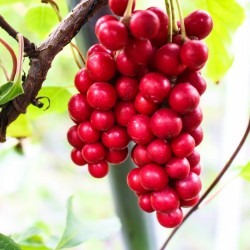






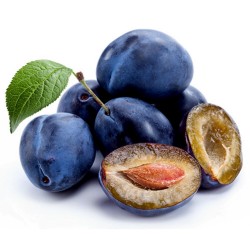
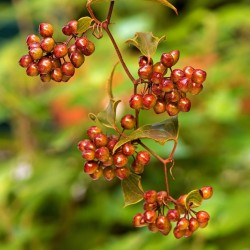
.png)

